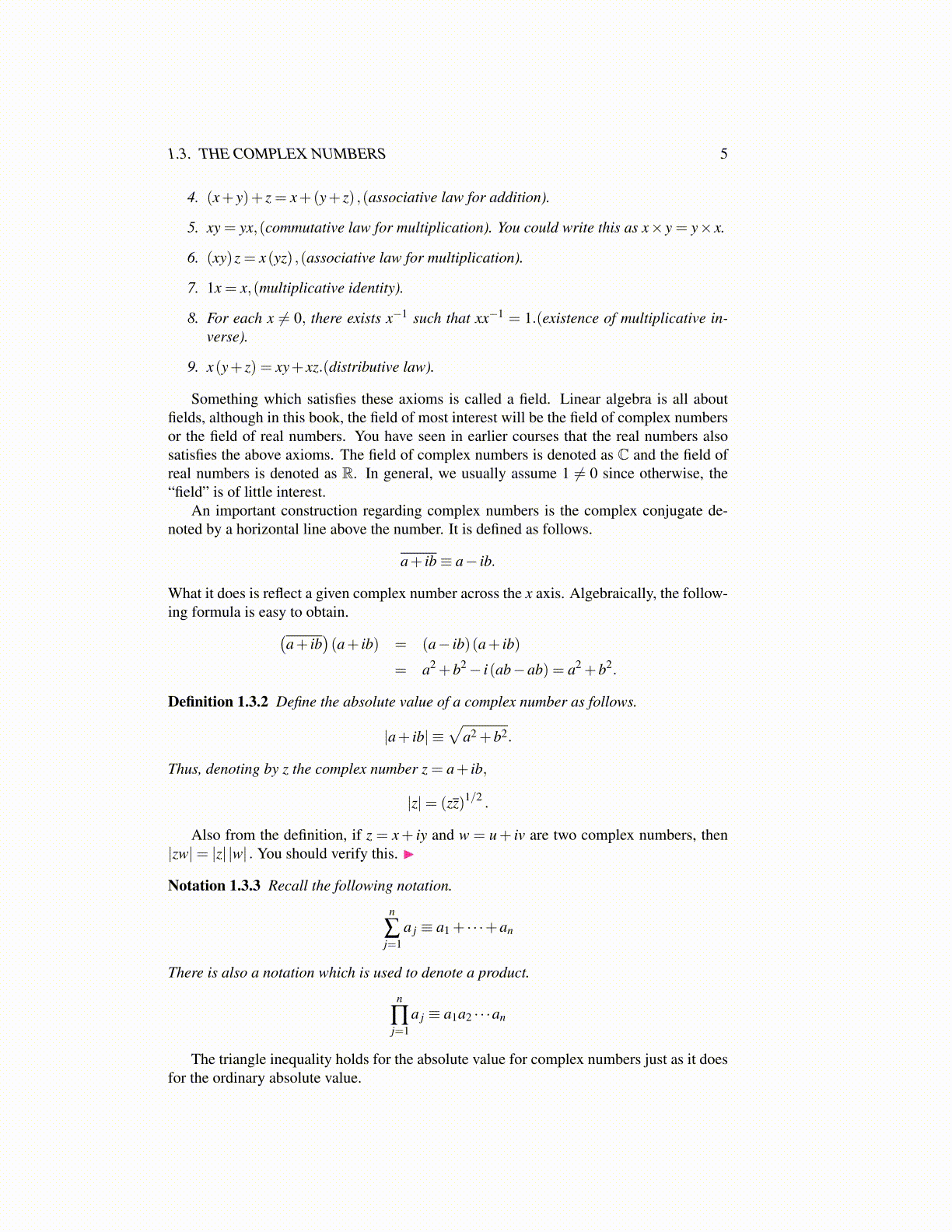
1.3. THE COMPLEX NUMBERS 5
4. (x+ y)+ z = x+(y+ z) ,(associative law for addition).
5. xy = yx,(commutative law for multiplication). You could write this as x× y = y× x.
6. (xy)z = x(yz) ,(associative law for multiplication).
7. 1x = x,(multiplicative identity).
8. For each x ̸= 0, there exists x−1 such that xx−1 = 1.(existence of multiplicative in-verse).
9. x(y+ z) = xy+ xz.(distributive law).
Something which satisfies these axioms is called a field. Linear algebra is all aboutfields, although in this book, the field of most interest will be the field of complex numbersor the field of real numbers. You have seen in earlier courses that the real numbers alsosatisfies the above axioms. The field of complex numbers is denoted as C and the field ofreal numbers is denoted as R. In general, we usually assume 1 ̸= 0 since otherwise, the“field” is of little interest.
An important construction regarding complex numbers is the complex conjugate de-noted by a horizontal line above the number. It is defined as follows.
a+ ib≡ a− ib.
What it does is reflect a given complex number across the x axis. Algebraically, the follow-ing formula is easy to obtain.(
a+ ib)(a+ ib) = (a− ib)(a+ ib)
= a2 +b2− i(ab−ab) = a2 +b2.
Definition 1.3.2 Define the absolute value of a complex number as follows.
|a+ ib| ≡√
a2 +b2.
Thus, denoting by z the complex number z = a+ ib,
|z|= (zz)1/2 .
Also from the definition, if z = x+ iy and w = u+ iv are two complex numbers, then|zw|= |z| |w| . You should verify this. ▶
Notation 1.3.3 Recall the following notation.
n
∑j=1
a j ≡ a1 + · · ·+an
There is also a notation which is used to denote a product.
n
∏j=1
a j ≡ a1a2 · · ·an
The triangle inequality holds for the absolute value for complex numbers just as it doesfor the ordinary absolute value.